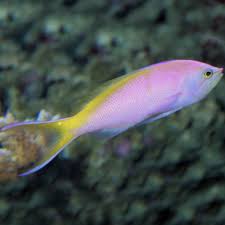Dragons in Classic Chinese Paintings: A Symbol of Power and Mysticism

The dragon holds a revered place in Chinese culture, symbolizing strength, wisdom, and divine power. In traditional Chinese art, dragons have been portrayed in a myriad of ways, often reflecting the complex cultural and spiritual values of the time. The depiction of dragons in classic Chinese paintings is not just an artistic choice but a deep cultural expression, representing a connection to both the natural and supernatural worlds. Let’s explore the role of dragons in these ancient artworks, their symbolism, and the techniques used by artists to bring these majestic creatures to life.
The Dragon: A Symbol of Imperial Power and Protection
In classic Chinese paintings, dragons are often associated with the emperor, the “Son of Heaven,” who was believed to be a divine ruler. The dragon, as a symbol of imperial power, was frequently used to represent the emperor’s authority and his connection to the heavens. As a divine and mythological creature, the dragon was seen as the protector of the emperor’s realm, embodying the harmony between the earthly and celestial worlds.
One of the most iconic depictions of the dragon in traditional Chinese painting is in the form of dragon robes worn by emperors during ceremonial occasions. These robes, embroidered with images of dragons, represented the emperor’s absolute power and his sacred right to rule. Paintings that feature the dragon often show it surrounded by clouds and flames, signifying the powerful and untouchable nature of the emperor’s reign.
The Dragon as a Cosmic Force in Classic Art
In ancient Chinese cosmology, the dragon was not only a symbol of power but also a representation of the forces of nature. The dragon was often depicted in landscape paintings, representing the harmony between the natural world and the supernatural realm. Dragons were portrayed soaring above mountains, rivers, and oceans, often accompanied by clouds and mist, symbolizing their connection to the heavens and their ability to control the elements, such as water and weather.
In many classic Chinese paintings, the dragon was depicted alongside other symbolic creatures, like the phoenix, tortoise, and crane, which together represented the harmony of the universe. These creatures, including the dragon, embody the yin-yang philosophy of balance and duality, where the dragon often symbolized the masculine, active force, while the phoenix represented the feminine, passive force. This interplay between the dragon and other mythical beings is a testament to the complexity and depth of Chinese philosophical thought.
The Dragon and the Five Elements
Another recurring theme in classical Chinese art is the connection between the dragon and the Five Elements—wood, fire, earth, metal, and water. The dragon, being a creature associated with water and weather, was often linked to the element of water. In some artworks, dragons were shown diving into oceans or lakes, signifying their mastery over the element and their role in controlling the rain, which was vital for agriculture.
Dragons were also shown in association with fire in many paintings, symbolizing the destructive yet regenerative force of nature. In these depictions, the dragon often breathed fire or was surrounded by flames, representing its ability to bring both creation and destruction. The combination of these elements in classic Chinese paintings highlights the dragon’s role as a dynamic force of nature—one that could maintain balance in the universe.
The Art of Depicting Dragons: Techniques and Styles
In traditional Chinese paintings, dragons were often rendered in a highly stylized manner, with intricate details that emphasized their power and majesty. Artists used bold, sweeping lines to create the dragon’s sinuous form, often making it appear as if it was swirling through clouds or rising from the sea. The dragon’s body was often shown with scales, which were painted with meticulous care, reflecting the dragon’s divine and immortal nature.
The use of color in dragon depictions was also significant. Gold and yellow, for instance, were often used to represent the divine and imperial aspects of the dragon, while shades of red and green symbolized vitality and prosperity. The dragon’s claws, whiskers, and eyes were often highlighted with contrasting colors to make the creature appear more dynamic and lifelike.
Additionally, traditional Chinese paintings of dragons often incorporated calligraphy and poetry to further enhance the artwork’s spiritual and philosophical meaning. These elements added layers of depth to the dragon’s depiction, turning the painting into a visual and literary masterpiece.
The Dragon as a Spiritual Guide and Protector
In addition to representing power and imperial authority, the dragon in classic Chinese paintings was also considered a spiritual guide and protector. Dragons were believed to have the ability to control natural forces like rain, winds, and floods, which were vital for the prosperity of the land. As protectors of the land, dragons were often depicted in paintings guarding important temples, palaces, or natural landmarks, ensuring the safety and well-being of the people.
In some mythological scenes, the dragon is seen ascending to the heavens, where it could offer divine protection and guidance to the mortal realm. This imagery conveyed the belief that the dragon was a bridge between heaven and earth, a powerful intermediary that could bring harmony and balance to both realms.
Famous Dragon Paintings and Their Historical Significance
Some of the most famous dragon paintings in Chinese art history are attributed to renowned painters of the imperial court. One such example is the Nine Dragons Scroll by Chen Rong, a celebrated work of the Southern Song dynasty. This painting depicts nine dragons in a dramatic and powerful composition, with each dragon rendered in vivid detail as they swim through tumultuous waves and clouds. The painting is often interpreted as a symbol of the emperor’s power and the cosmic order he was meant to uphold.
Another famous painting is “The Dragon and the Phoenix”, a work that symbolizes the balance of opposites—where the dragon and the phoenix represent male and female energies, respectively. This motif of the dragon and phoenix has been used in various Chinese dynasties to represent the emperor and empress, emphasizing their complementary roles in ensuring the stability and prosperity of the nation.
The Legacy of Dragons in Modern Chinese Art
Although dragons were initially most prominently featured in imperial art, their presence in Chinese paintings continues to this day. In modern Chinese art, dragons are often depicted as a symbol of national pride and cultural heritage, reflecting the country’s rich history and mythology. Many contemporary artists have revived traditional techniques and symbolism, using the dragon as a metaphor for resilience, strength, and the ever-changing nature of Chinese society.
In both traditional and modern art, the dragon remains a timeless symbol of China’s deep connection to its cultural roots and its aspirations for prosperity and harmony. Whether depicted in classic scroll paintings or modern canvas works, the dragon’s role as a symbol of cosmic power, imperial authority, and natural forces continues to captivate the imagination of people both within and outside of China.
Conclusion
Dragons in classic Chinese paintings are not only artistic representations but also carriers of deep cultural meaning. As symbols of power, protection, and cosmic harmony, dragons have long been integral to Chinese art, reflecting the rich philosophical and spiritual traditions of the country. Through their intricate depictions in art, dragons continue to inspire awe and admiration, preserving their status as one of the most iconic and revered creatures in Chinese culture.

